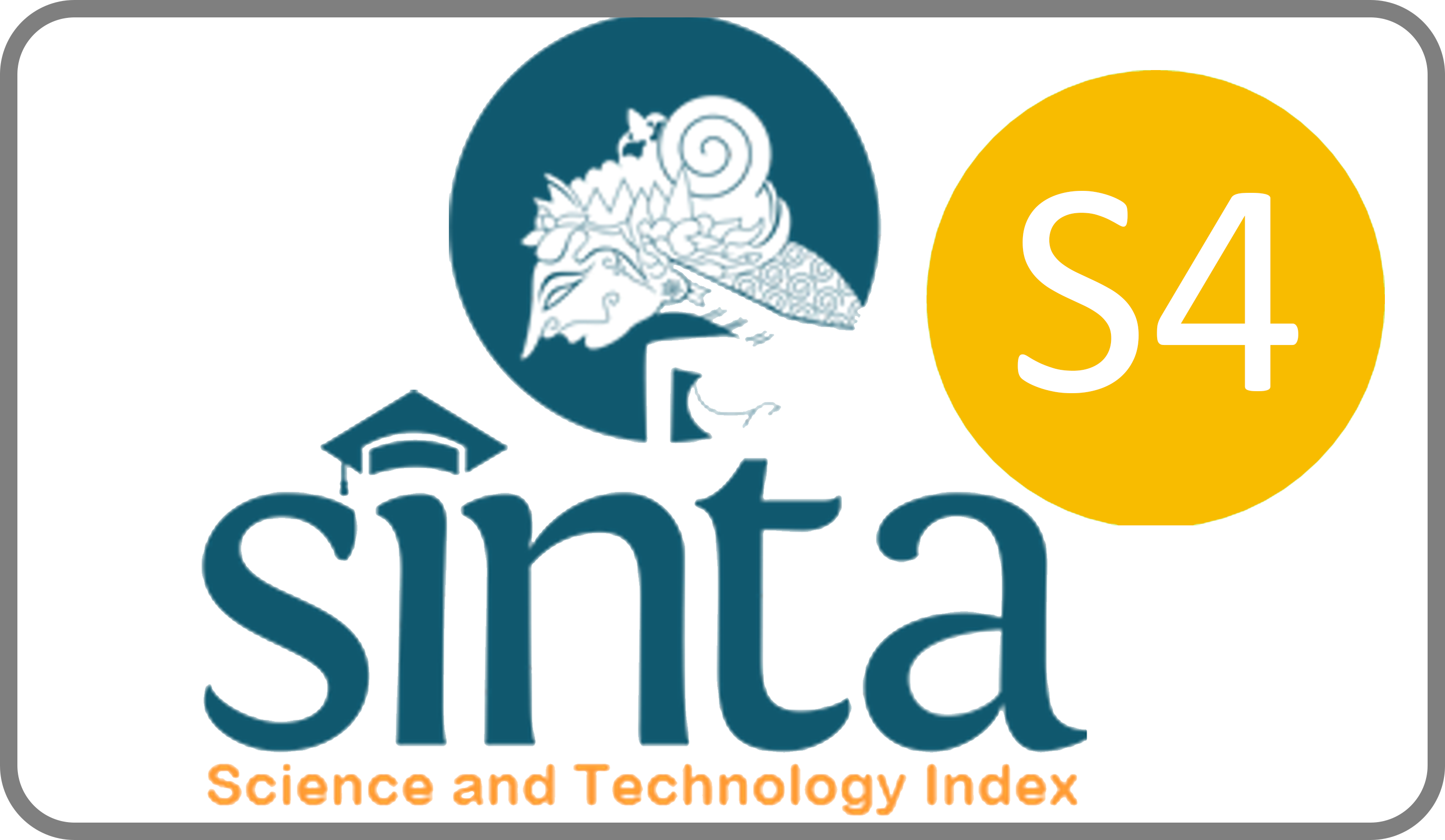MENSTRUAL EDUCATION TO ENHANCE KNOWLEDGE IN FEMALE ADOLESCENTS AGED 8–14 YEARS
Downloads
Vulnerable groups include several groups of individuals who experience obstacles or restrictions in achieving a decent standard of living. One of the groups included in the vulnerable group is girls living in orphanages. They have reproductive rights that must be fulfilled, for example getting education and information related to reproductive health. One of them is related to menstrual education. This activity was carried out at the LKSAM Bina Umat Orphanage on May 19, 2024.The purpose of this community service is to increase the knowledge of adolescent children in preparing for menstruation. The method of implementing community service is carried out by brainstorming which contains counseling on menarche, menstruation, dysmenorrhea and personal hygiene using educational media flipcharts and posters, as well as pre-test and post-test to evaluate the level of understanding of the material. The research method used was total sampling technique. This activity involved the sample students used, namely 15 children from the LKSAM Bina Umat orphanage with an age range of 8-14 years. The results of the activity are: of the 16 targeted participants, 15 participants or 93.75% attended the counseling activities; the average pre-test score was 81.25% and the post-test was 92.5%, it can be seen that there was an average increase of 11.25%. From this activity, it can be obtained that there has been an increase in understanding of menstrual readiness in children aged 8-14 years at Panti
Adri, Rantih F, Liza Andriyani, Chyka Febria, Pagdya Haninda, Kartika Maryona, Mega A Nugrahmi, Yuliza Anggraini, and Ernita L. 2022. “Edukasi Tentang Menstruasi Pada Remaja Putri Di Pati Asuhan Aisyiyag.” Jurnal Salingka Abdimas 2, no. 1: 111–14. https://doi.org/10.33755/jkk.v4i2.110.
Ardhiani, Innas T, Ratih K Wardhani, and Heppy R Mardiana. 2024. “Pendidikan Kesehatan Dalam Pemberdayaan Remaja Sehat Untuk Meningkatkan Pengetahuan Tentang Pernikahan Dini Di MTS Nurul Huda.” Jurnal Layanan Masyarakat 8, no. 2: 219–24.
Arianti. 2019. “Urgensi Lingkungan Belajar Yang Kondusif Dalam Mendorong Siswa Belajar Aktif.” Education : Jurnal Sosial Humaniora Dan Pendidikan 11, no. 1. https://doi.org/10.51903/education.v2i1.148.
Ayu A, Delfriana, and Prodalima Sinulingga. 2020. “Pengetahuan Remaja Putri Tentang Menarche.” Jurnal Ilmiah Keperawatan Imelda 6, no. 2: 123–27. https://doi.org/10.52943/jikeperawatan.v6i2.405.
Dolang, Mariene Wiwin, and Erlin Kiriwenno. 2020. “Pengaruh Pendidikan Kesehatan Tentang Higiene Menstruasi Terhadap Pengetahuan Remaja Putri.” Biosel: Biology Science and Education 9, no. 1: 101. https://doi.org/10.33477/bs.v9i1.1327.
Fadilah, Nadya Audina, Sekar Ayu Putri, Winda Nadya, and Chahya Kharin Herbawani. 2022. “Peningkatan Pengetahuan Perilaku Hidup Bersih Dan Sehat Di Yayasan Panti Asuhan Sakinah Depok.” GERVASI: Jurnal Pengabdian Kepada Masyarakat 6, no. 3: 664–73. https://doi.org/10.31571/gervasi.v6i3.3887.
Faramade, Ifedola Olabisi, Adenike Iyanuoluwa Olugbenga-Bello, and Olayinka Olufisayo Goodman. 2023. “Sexual Knowledge, Risk Behavior, and Access to Reproductive Health Services among Orphaned Adolescents in Southwest Nigeria: Implications for Institutionalized Care.” Frontiers in Global Women’s Health 4, no. May. https://doi.org/10.3389/fgwh.2023.1151099.
Febrina, Ria. 2020. “Edukasi Menstruasi Pada Remaja Putri Di Pondok Pesantren Darussalam Al-Hafidz Kota Jambi.” Jurnal Abdimas Kesehatan (JAK) 2, no. 3: 201. https://doi.org/10.36565/jak.v2i3.130.
Fitria, Nila E, Dian F Sari, S Suciana, A Syahid, Wulandari, and Gyta M Vilosta. 2022. “Peningkatan Pengetahuan Dan Edukasi Sikap Remaja Putri Tentang Kesehatan Reproduksi Di Panti Asuhan Aisyiyah Kec. Kuranji Kota Padang.” Jurnal Kreativitas Pengabdian Kepada Masyarakat (PKM) 5, no. 3: 916–24.
Humaedi, Sahadi, Budi Wibowo, and Santoso T Raharjo. 2020. “KELOMPOK RENTAN DAN KEBUTUHANNYA (Sebuah Kajian Hasil Pemetaan Sosial CSR PT Indonesia Power UPJP Kamojang).” Share : Social Work Journal 10, no. 1: 51. https://doi.org/10.24198/share.v10i1.26896.
Ingrit, Belet Lydia, Christie Lidya Rumerung, Dwi Yulianto Nugroho, Komilie Situmorang, Maria Maxmila Yoche A, and Marisa Junianti Manik. 2022. “Pendidikan Kesehatan Reproduksi Pada Remaja.” Prosiding Konferensi Nasional Pengabdian Kepada Masyarakat Dan Corporate Social Responsibility (PKM-CSR) 5, no. December: 1–10. https://doi.org/10.37695/pkmcsr.v5i0.1461.
Karima, Ulya Q., Terry Y.R. Pristya, and Chahya K. Herbawani. 2023. “Information-Seeking Behavior of Reproductive Health Based on Socio-Demographic among Adolescents in Jakarta, Indonesia.” Journal of Education and Health Promotion 12, no. 1 (August). https://doi.org/10.4103/jehp.jehp_1131_22.
Mahmudah, Nurul. 2022. “Edukasi Kesehatan Reproduksi Pada Remaja.” Jurnal Abdimas: Pengabdian Dan Pengembangan Masyarakat 4, no. 2: 24–28. https://doi.org/10.30630/jppm.v4i2.909.
Maitz, Emanuel, Katharina Maitz, Gerald Sendlhofer, Christina Wolfsberger, Selma Mautner, Lars-Peter Kamolz, and Barbara Gasteiger-Klicpera. 2020. “Internet-Based Health Information–Seeking Behavior of Students Aged 12 to 14 Years: Mixed Methods Study.” Journal of Medical Internet Research 22, no. 5 (May): e16281. https://doi.org/10.2196/16281.
Marhamah, M.Pd. 2016. “Flipchart Sebagai Alternatif Media Untuk Meningkatkan Prestasi Belajar Matematika.” Jurnal Dosen Universitas PGRI Palembang., 969–75.
Copyright (c) 2025 Rufidah Maulina, Evina Kusumawardhani, Efrila Antika Puji Lestari, Eka Yunanda Permata Putri, Elshinta Damayanti Antoro Puteri, Evvy Anjar Puspitasari, Fanny Fatatin Nabila, Fressyana Kusuma Ratri, Jihan Abdillah Nur Jamiilah, Karisma Sakina Mujahida, Khairunnisa Meinawati, Laily Mazaya

This work is licensed under a Creative Commons Attribution-ShareAlike 4.0 International License.
JLM by Unair is licensed under a Creative Commons Attribution-ShareAlike 4.0 International License.
1. The journal allows the author to hold the copyright of the article without restrictions.
2. The journal allows the author(s) to retain publishing rights without restrictions
3. The legal formal aspect of journal publication accessibility refers to Creative Commons Attribution Share-Alike (CC BY-SA).
4. The Creative Commons Attribution Share-Alike (CC BY-SA) license allows re-distribution and re-use of a licensed work on the conditions that the creator is appropriately credited and that any derivative work is made available under "the same, similar or a compatible license”. Other than the conditions mentioned above, the editorial board is not responsible for copyright violation.


















